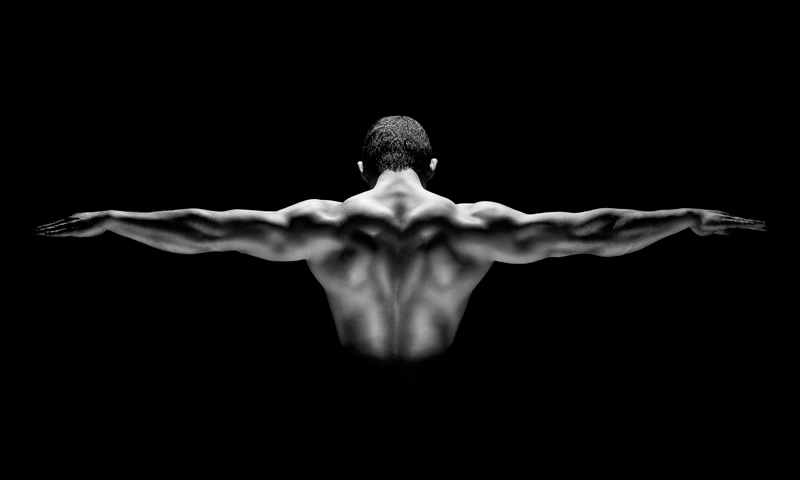
Acupuncture and “Waffling” Natural Recovery
As human beings we are aware of our bodies to varying degrees. But did you know that how you are put together has its own set of rules?
These rules govern how we sit in space, how we move, how we protect ourselves and how we recover from injury and illness. These rules are known as tensegrity.
When you injure or strain your low back your muscles, which are an active part of this system, begin to adjust to compensate and protect you. We call this muscular response “guarding.” In the early stages, this is a good thing as it protects you from injuring yourself further. After a time, that same protective mechanism will impede or slow down your recovery because your system cannot release the muscle tension.
When we use acupuncture to treat this injury, it helps relieve your pain by decreasing the guarding response/muscle tension as well as mediating pain signals transferred via your nervous system. When the guarding response is released your system will begin to naturally shift and disseminate the stresses in your muscles. During this time your body will experience “waffling” — times when you feel better and others when it seems as if the tightness and pain levels have returned but to a lesser degree. This waffling is your body’s natural response to recovery and will diminish as your body calibrates itself. You may initially experience both ends of the spectrum -painlessness and painfulness – vacillating between them until your body settles into a neutral, “normal” state of muscular tension.
Acupuncture encourages waffling, which encourages your muscles, fascia, nerves and physiology to adapt to beneficial structural changes, hence sustaining long term change and recovery.
Categories: Arthritis, Chronic Problems, Diseases & Disorders, Headaches, Injury Rehabilitation, Leading Edge Acupuncture, Pain Management, The Medicine Of Acupuncture, Therapies & Treatments
Post by Anna on February 19, 2016
At Seattle Acupuncture Associates (S*A*A) all our licensed acupuncturists in Seattle, Kirkland, Everett, and Renton, WA are National Board Certified in Acupuncture. Speak With An Acupuncturist - Call 206.622.0246
Acupuncture Categories
- Arthritis (1)
- Chronic Problems (2)
- Clinic Updates (2)
- Diseases & Disorders (1)
- For Physicians (2)
- Headaches (1)
- Injury Rehabilitation (2)
- Leading Edge Acupuncture (3)
- Pain Management (2)
- The Medicine Of Acupuncture (3)
- Therapies & Treatments (2)
When you injure or strain your low back your muscles, which are an active part of this system, begin to adjust to compensate and protect you.
Acupuncture and “Waffling” Natural Recovery

These rules govern how we sit in space, how we move, how we protect ourselves and how we recover from injury and illness. These rules are known as tensegrity.
When you injure or strain your low back your muscles, which are an active part of this system, begin to adjust to compensate and protect you. We call this muscular response “guarding.” In the early stages, this is a good thing as it protects you from injuring yourself further. After a time, that same protective mechanism will impede or slow down your recovery because your system cannot release the muscle tension.
When we use acupuncture to treat this injury, it helps relieve your pain by decreasing the guarding response/muscle tension as well as mediating pain signals transferred via your nervous system. When the guarding response is released your system will begin to naturally shift and disseminate the stresses in your muscles. During this time your body will experience “waffling” — times when you feel better and others when it seems as if the tightness and pain levels have returned but to a lesser degree. This waffling is your body’s natural response to recovery and will diminish as your body calibrates itself. You may initially experience both ends of the spectrum -painlessness and painfulness – vacillating between them until your body settles into a neutral, “normal” state of muscular tension.
Acupuncture encourages waffling, which encourages your muscles, fascia, nerves and physiology to adapt to beneficial structural changes, hence sustaining long term change and recovery.
Categories: Arthritis, Chronic Problems, Diseases & Disorders, Headaches, Injury Rehabilitation, Leading Edge Acupuncture, Pain Management, The Medicine Of Acupuncture, Therapies & Treatments
Post by Anna on February 19, 2016
Acupuncture Categories
- Arthritis (1)
- Chronic Problems (2)
- Clinic Updates (2)
- Diseases & Disorders (1)
- For Physicians (2)
- Headaches (1)
- Injury Rehabilitation (2)
- Leading Edge Acupuncture (3)
- Pain Management (2)
- The Medicine Of Acupuncture (3)
- Therapies & Treatments (2)

 All Acupuncture Posts
All Acupuncture Posts
Sorry, comments are closed for this post.